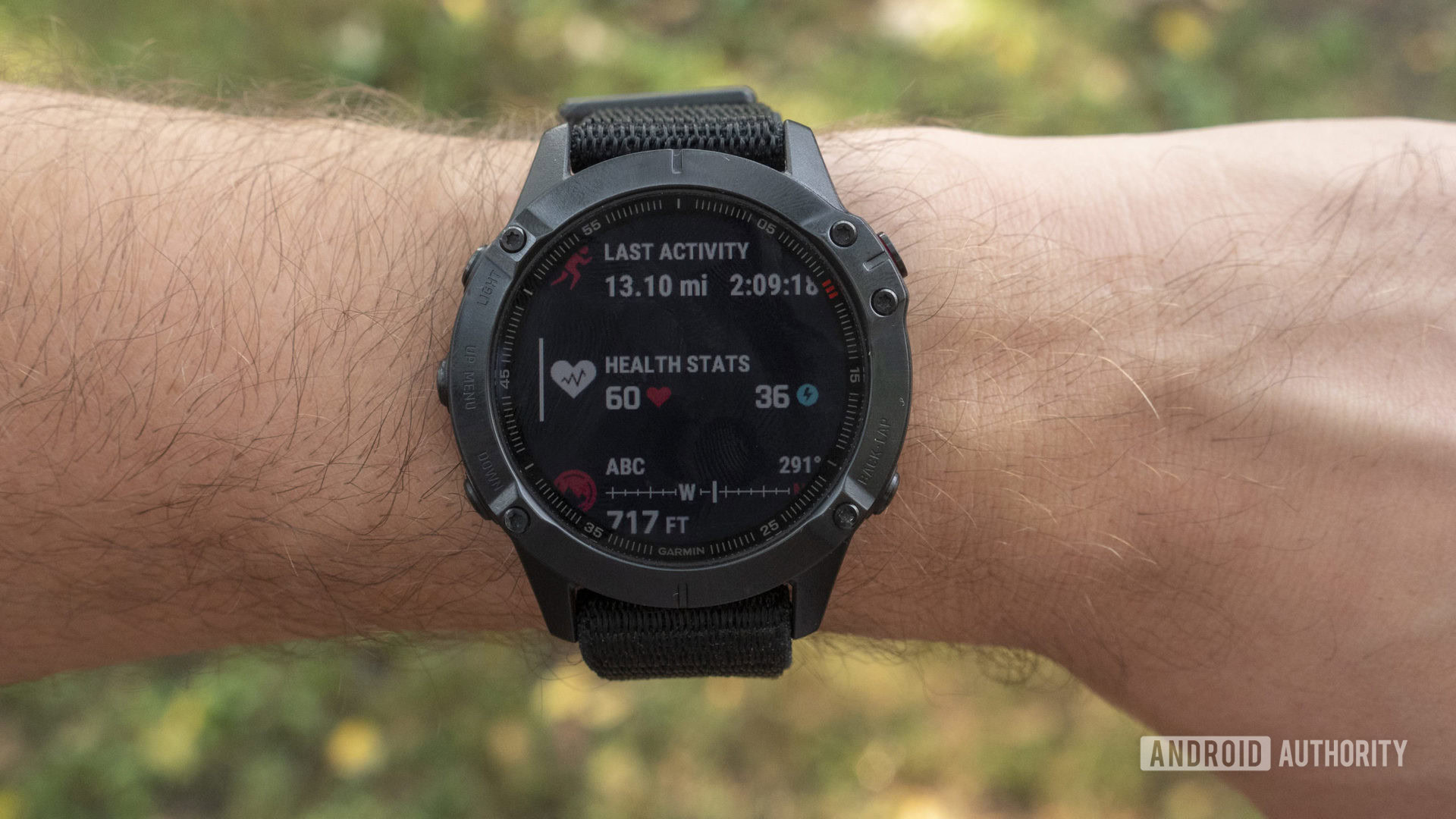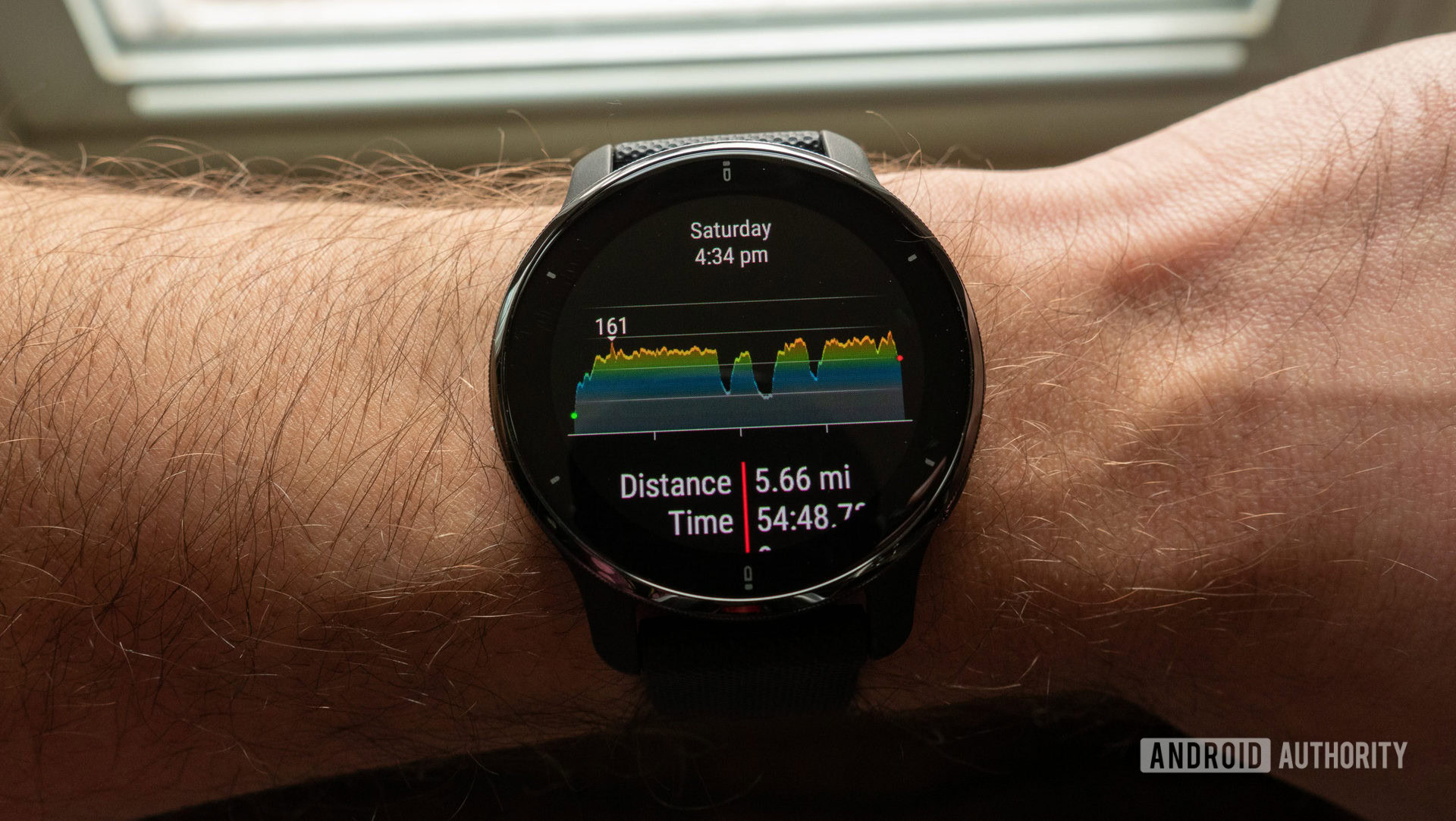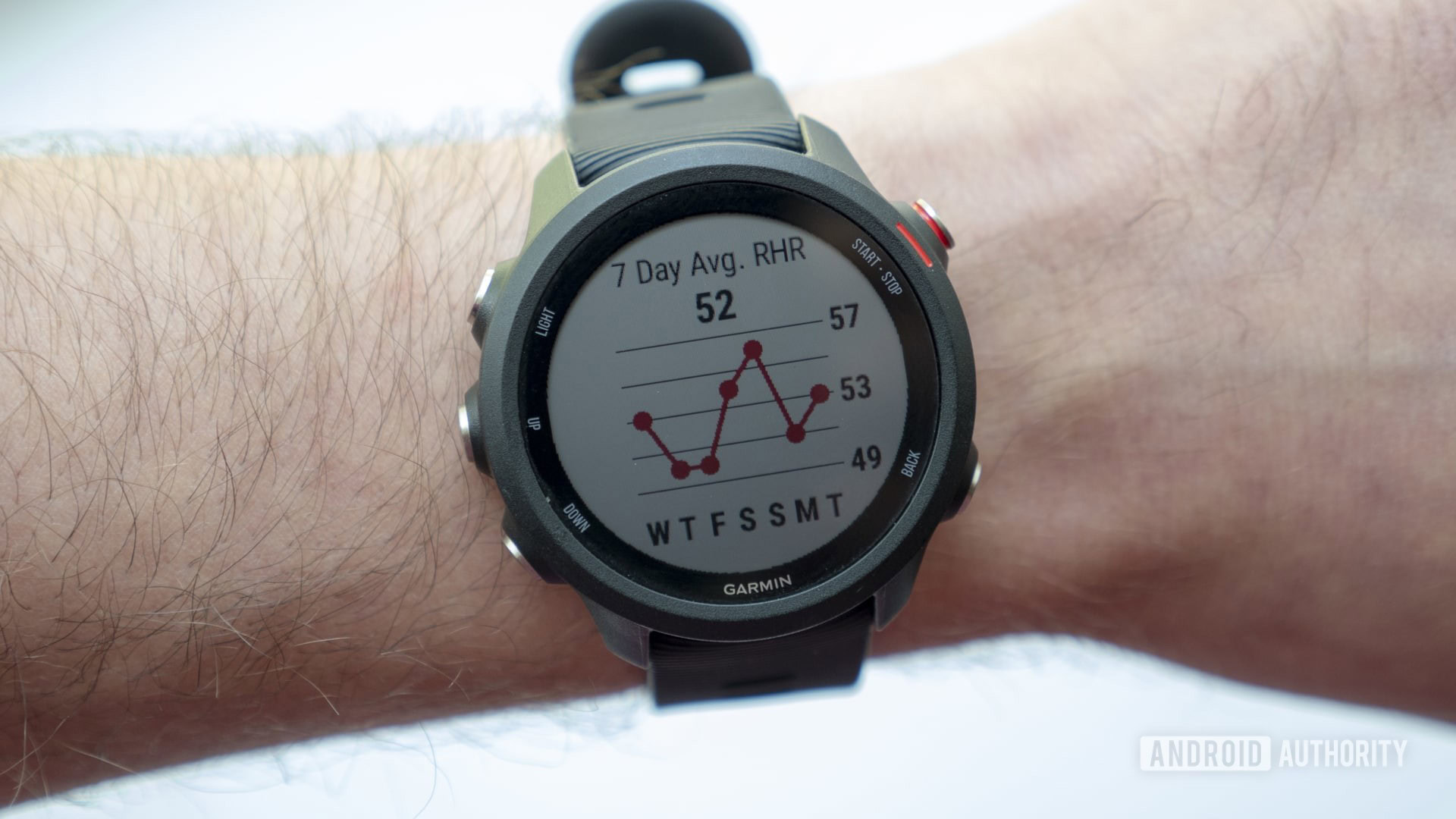Affiliate links on Android Authority may earn us a commission. Learn more.
Garmin heart rate zones: What you need to know

Most professionals regard resting heart rate as a reliable measure of fitness. But when it comes to training, keeping your heart rate in specific “zones” is more important for building stamina and cardiovascular strength. Some of the best smartwatches allow users to set and keep track of their heart rate zones during workouts. Here’s how to make the most of this feature on Garmin devices.
What are heart rate zones?
The human heart beats at variable rates. It’ll slow during rest and pick up during physical activity. You could reach your maximum/threshold heart rate depending on how intense that activity is. (Calculate your threshold heart rate by subtracting your age from 220 to get a figure in beats per minute.) However, you don’t want to train too intensely for too long, which could cause more harm than good.
Medical experts recommend training in a heart rate zone to best serve your goals. Garmin states these zones vary between 60% to 110% of your threshold heart rate. Garmin will calculate these figures for you when you create your account based on your age, gender, and resting and maximum heart rate.
Garmin’s heart rate zones

Garmin classifies five particular heart rate zones:
- Zone 1 (Warm up): The lowest heart rate zone, around 60-70% of your threshold heart rate. It’s effectively the zone you’re in when you’re at a walking pace. Time spent at this level can lower stress and kick off aerobic training.
- Zone 2 (Easy): Around 70-80% of your threshold heart rate. Garmin notes that this is the heart rate you should aim for during a cool-down jog. This is a good zone for basic cardio training and fat burning.
- Zone 3 (Aerobic): This is the optimal cardiovascular training zone. At around 80-90% of your threshold heart rate, this zone is experienced during longer runs and leads to improved aerobic capacity.
- Zone 4 (Threshold): Effectively 90-100% of your maximum heart rate; this is where things become a little uncomfortable for most people. Garmin notes that people in this zone should experience forceful breathing, which leads to improved anaerobic capacity and speed over time.
- Zone 5 (Maximum): This is pushing your heart to its limit. This zone is 100%-110% of your threshold heart rate, but spending time in this zone leads to increased anaerobic and muscle endurance and improvements to peak power. However, it’s unsustainable for long periods.
Occasionally, some sections of your heart rate graph during workouts are labeled as No Zone. This means your heart rate was less than 60% of your threshold heart rate and below any classified zone.
How to set your heart rate zones on your Garmin watch
If you aren’t happy with the heart rate zones defined by Garmin, you can adjust them. Thankfully, the process requires the Garmin Connect app. So whether you own a Garmin Venu 3 or a Forerunner 265, the process is the same:
- Open Garmin Connect on your phone.
- Tap on the three-line main menu button at the top-left.
- Select Garmin Devices, then tap on your device.
- Depending on the model you own, select User Settings, User Profile, or My Stats.
- Tap on Heart Rate Zones.
- Set custom heart rate zones.
- You can edit heart rate zones for all activities or Running and Cycling.
- Exit the screen to save your changes.
You can also change your heart rate zones directly from some Garmin watches, including the Venu and Fenix series. Depending on your device, the feature is usually situated within Settings > User Profile > Heart Rate Zones or Heart Rate.
Heart rate zone training

Not everyone wants to improve their sprinting performance or peak power, so it’s unnecessary to strive to max out your heart rate constantly. Instead, studies have noted the benefits of training in low-intensity zones for most of a regimen, pushing hard only occasionally.
You may have heard the term “80/20 training” floating around before. This suggests that 80% of your training should be done at a low-intensity heart rate zone, with just 20% spent at higher zones. It’s believed that this minimizes stress to the body and lowers recovery periods but doesn’t diminish returns received from high-intensity training.
Train within Zone 2 to burn fat
The “Easy” heart rate zone, where your heart rate doesn’t exceed 80% of its maximum but remains above 70%, is considered the optimum zone for burning fat. To achieve the latter, it’s recommended that users spend 150 minutes in zone 2 every week. That’s around 21 minutes daily, including weekends, or 30 minutes daily during the week.
Train within Zone 4 to improve top speed
Zone 4 is effectively taxing your heart at its maximum. Working out in this zone is believed to improve anaerobic capacity and quick, powerful bursts of effort, but more importantly for runners, top speed. One way to stay in this zone is by adopting high-intensity interval training or HIIT. This involves alternating between short bursts of maximum effort (sprinting) with lower-intensity cardio (jogging or brisk walking).